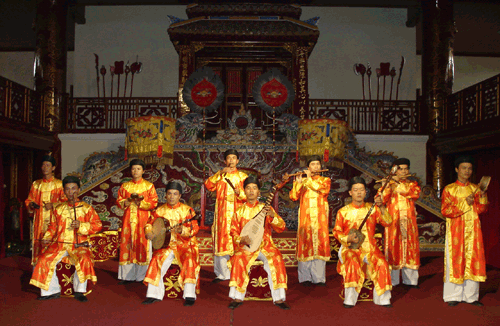Nha Nhac: An Intangible Heritage

Nha nhac is a form of Vietnamese court music. Though just like its culture, Vietnamese court music is as diverse. However the term nhã nhạc refers specifically to the Vietnamese court music performed from the Trần dynasty of the 13th century to the Nguyễn dynasty, which ended in the early 20th century. The word Nha Nhac itself means “elegant music” or “ceremonial music.” In such sense it refers to a broad range of musical and dance styles performed at the Vietnamese royal court from the fifteenth to the mid-twentieth century.
It reflects the spirit and the will of the royal dynasty, such as culture, art, law, power, even the ideology, aesthetics and regional trend. Not only it plays an important role, Nha nhac is also the core of the court affairs. Oftentimes, it serves the entertainment demand of the King, royal family and the court professional, classical and scholarly music. Instruments commonly used to create nhã nhạc include kèn bầu (conical oboe), đàn tỳ bà (pear-shaped lute with four strings), đàn nguyệt (moon-shaped two-string lute), đàn tam (fretless lute with snakeskin-covered body and three strings), đàn nhị (two-stringed vertical fiddle), sáo (also called sáo trúc; a bamboo transverse flute), trống (drum played with sticks), and other percussion instruments. The principles of Nhã nhạ came to Vietnam during the Ho Dynasty, whose reign was very short-lived and cause nha nhac to fall rapidly into oblivion. It only began to re-develop in the reign of King Le Thanh Tong (1460-1497) and reached its peak under the Nguyen Dynasty.
In 2005, UNESCO recognized the music as a Masterpiece of the Oral and Intangible Heritage of Humanity and since then extensive efforts were pursued to preserve this truly unique and highly developed art. At present, Nhã nhạc is still performed in the old capital of Huế.









